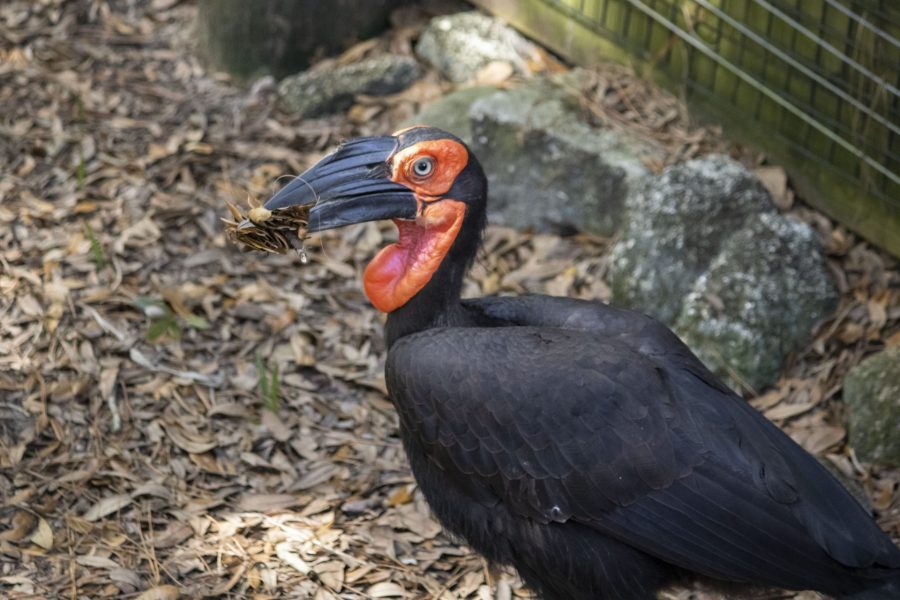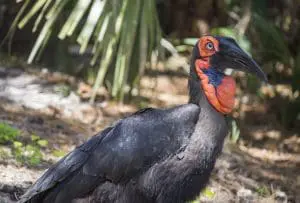

Meet Newman, one of our two Southern ground hornbills!
If you’ve visited the Zoo, you’ve likely met a lot of our more than 900 animal residents. Some animals are easy to spot, but others are often not as easy to see because of their habitat set up, their personalities or their sleep cycles among other things. We wanted to start a “Meet the Animals” section of our blog to introduce you to some of the residents that you may (or may not have) met yet!

Say hi to J.D., our female Southern ground hornbill.
This month, we’d like to share more about two Zoo residents who might not need much of an introduction – our two Southern ground hornbills 27-year-old J.D. and 19-year-old Newman! You can often spot J.D. in our Expedition Africa loop sharing space with some of our smaller animal residents like our klipspringers and our African crowned cranes (depending on the current construction schedule for this loop!), while Newman now lives in a behind-the-scenes habitat. You can tell them apart by their coloring – female Southern ground hornbills have blue on their necks, while males are all red.
J.D. has been at our Zoo for about 20 years, while Newman has been with us for 11 years. While inquisitive J.D. prefers to watch her keepers from a distance (before inspecting their work once it’s complete!), Newman is a bit more personable and loves to interact with his keepers.
“He will often find items in his habitat, such as a rock, and show them to keepers (they are for us to look at, but not to have, he says),” joked Alyssa Simon, the area supervisor of the Africa platform.
The duo don’t share space together. While they like to vocalize to each other and show positive interactions in protected contact scenarios, they prefer to have a more “long-distance” relationship, Alyssa said.
All of our animal residents receive a well-balanced diet crafted by our commissary team and designed by our veterinary team. Southern ground hornbills receive a combination of meat, whole prey, parrot pellets, fruit and vegetables.
We also make sure that our animal residents live in an enriching environment with safe, meaningful choices and challenges. We often use enrichment, special items or experiences that may elicit natural behaviors, to ensure they’re at their best both physically and mentally. J.D. and Newman love any sort of enrichment in them that they can push around or manipulate. Their keepers will often hide their favorite foods inside of paper, boxes or other feeders.
“Newman loves everything and will spend hours playing with various items including balls and puzzle feeders,” Alyssa said.
J.D. and Newman have the choice to participate in training and behaviors that helps in their care. J.D. will voluntarily step onto a scale for monthly weights. Newman, who loves interacting with his keepers, has learned to step on a scale for weights, go on a perch, sit and enter a kennel.
One extra factoid about hornbills that might surprise you: They have amazing eyelashes!
“They are actually specialized feathers that grow along their eyelid and look like the perfect falsies,” Alyssa said.
Brevard Zoo is an independent, not-for-profit organization that receives no recurring government funding for our operating costs. Your generous support enables us to continue to serve our community and continue our vital animal wellness, education and conservation programs.
